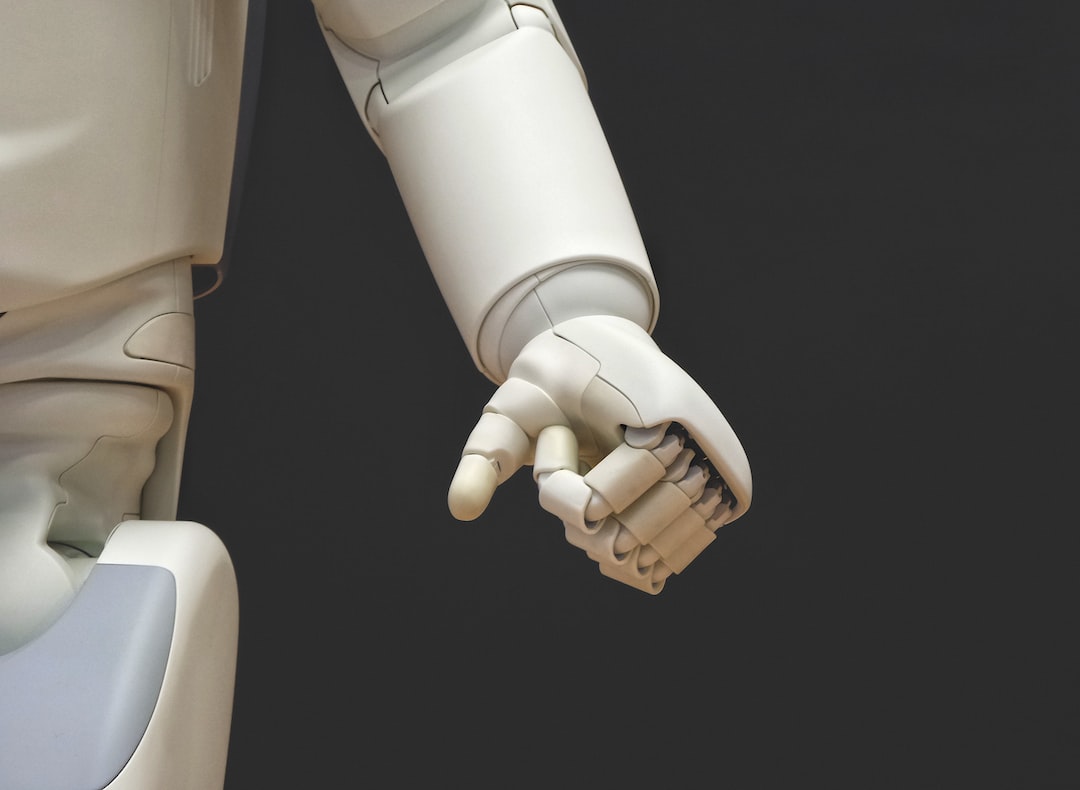In recent years, there has been a growing popularity of robotic cleaning machines in commercial settings. These machines have revolutionized the way floors are cleaned, offering numerous advantages over traditional cleaning methods. Robotic cleaners are equipped with advanced technology that allows them to navigate complex spaces, efficiently clean floors, and even avoid obstacles. This has made them an attractive option for many industries, including museums.
Benefits of Robotic Floor Cleaners in Museum Maintenance
The use of robotic floor cleaners in museums offers several benefits. Firstly, these machines increase efficiency by automating the cleaning process. They can cover large areas in a short amount of time, reducing the labor required for manual cleaning. This not only saves time but also reduces labor costs for museums.
Secondly, robotic cleaners are designed to be gentle on floors, making them ideal for use in museums where delicate artifacts and exhibits are present. These machines are equipped with sensors that allow them to detect obstacles and adjust their cleaning patterns accordingly. This helps prevent accidental damage to valuable items.
How Robotic Cleaning Machines Work: A Closer Look at Industrial Robotic Cleaning Machines
Robotic cleaning machines operate using a combination of sensors, motors, and programming. They are typically equipped with sensors that allow them to detect obstacles and navigate around them. These sensors can include infrared sensors, ultrasonic sensors, or cameras.
The cleaning process is carried out by brushes or pads attached to the machine. These brushes or pads rotate or vibrate, depending on the type of machine, to effectively clean the floor surface. Some robotic cleaners also have the ability to dispense cleaning solutions or disinfectants as they clean.
There are different types of robotic cleaners available, each with its own specific features. For example, some machines are designed for wet cleaning, while others are designed for dry cleaning. Some machines are also capable of mopping or vacuuming in addition to sweeping.
The Role of Artificial Intelligence in Robotic Floor Cleaners
Artificial intelligence (AI) plays a crucial role in enhancing the performance of robotic cleaning machines. AI algorithms allow these machines to learn and adapt to their environment, improving their efficiency and effectiveness over time. For example, AI can help robotic cleaners optimize their cleaning patterns based on the layout of the museum and the location of obstacles.
AI also enables robotic cleaners to detect and avoid delicate artifacts and exhibits. By analyzing data from sensors, these machines can identify objects that should not be touched or moved. This helps prevent accidental damage and ensures the preservation of valuable collections.
The potential for AI in robotic cleaning machines is vast. As technology continues to advance, we can expect to see even more sophisticated AI algorithms that further enhance the capabilities of these machines.
Features to Consider When Choosing Robotic Cleaning Machines for Museum Maintenance
When selecting a robotic cleaner for museum maintenance, there are several key features to consider. Firstly, it is important to choose a machine that is specifically designed for use in museums. These machines are typically equipped with features that make them suitable for delicate environments, such as soft brushes or pads and adjustable cleaning settings.
Another important feature to consider is the size and maneuverability of the machine. Museums often have narrow corridors and tight spaces that require a compact and agile robotic cleaner. Additionally, it is important to choose a machine that has a long battery life and can cover large areas without needing frequent recharging.
Lastly, it is crucial to select a machine that is easy to operate and maintain. This includes features such as user-friendly interfaces, remote monitoring capabilities, and easy access to replaceable parts.
Case Studies: Successful Implementations of Robotic Floor Cleaners in Museums

Several museums have successfully implemented robotic cleaning machines and have experienced significant benefits. The National Museum of Natural History in Washington, D.C., for example, implemented robotic cleaners in their exhibition halls. These machines have helped reduce the time and effort required for manual cleaning, allowing staff to focus on other important tasks.
The Louvre Museum in Paris is another example of a museum that has successfully integrated robotic cleaners into their maintenance routine. The large size of the museum, coupled with the high foot traffic, made it challenging to keep the floors clean at all times. Robotic cleaners have helped alleviate this issue by providing consistent and efficient cleaning.
Overcoming Challenges in Implementing Robotic Cleaning Machines in Museum Maintenance
While the implementation of robotic cleaning machines in museums offers numerous benefits, there are also potential challenges that need to be addressed. One challenge is the initial cost of purchasing and installing these machines. However, it is important to consider the long-term cost savings that can be achieved through reduced labor costs and increased efficiency.
Another challenge is ensuring the proper training of museum staff to operate and maintain the machines. It is crucial to provide comprehensive training programs that cover not only the operation of the machines but also troubleshooting and maintenance procedures.
Additionally, museums need to carefully plan the integration of robotic cleaners into their maintenance routines. This includes determining the optimal cleaning schedule, identifying areas that require manual cleaning, and establishing protocols for handling delicate artifacts during the cleaning process.
Future of Museum Maintenance: Advancements in Robotic Cleaning Machines
The future of museum maintenance holds exciting possibilities for advancements in robotic cleaning technology. As technology continues to evolve, we can expect to see even more sophisticated robotic cleaners that are capable of performing a wider range of tasks. For example, future machines may have the ability to perform more detailed cleaning, such as polishing or waxing floors.
Advancements in AI will also play a significant role in the future of robotic cleaning machines. AI algorithms will continue to improve, allowing these machines to learn and adapt to their environment in real-time. This will result in even greater efficiency and effectiveness in maintaining museum spaces.
Revolutionizing Museum Cleaning with Robotic Floor Cleaners
In conclusion, the use of robotic floor cleaners has the potential to revolutionize museum maintenance. These machines offer numerous benefits, including increased efficiency, reduced labor costs, and improved preservation of delicate artifacts. By carefully selecting the right machine and overcoming implementation challenges, museums can greatly enhance their cleaning processes and improve the overall visitor experience. With advancements in technology and AI, the future of museum maintenance looks promising, paving the way for even more innovative solutions in the years to come.
If you’re interested in learning more about robotic floor cleaners for museums, be sure to check out Floorbotics’ website. They offer a wide range of innovative solutions designed specifically for the unique needs of museum environments. One article that caught my attention is “The Benefits of Using Robotic Floor Cleaners in Museums.” This insightful piece explores how these advanced machines can effectively maintain the cleanliness and preservation of valuable artifacts while reducing labor costs and improving overall efficiency. To read the full article, click here.
FAQs
What is a robotic floor cleaner for museums?
A robotic floor cleaner for museums is an autonomous cleaning device designed to clean floors in museums without human intervention.
How does a robotic floor cleaner for museums work?
A robotic floor cleaner for museums uses sensors and mapping technology to navigate around the museum floor and clean it. It can detect obstacles and avoid them while cleaning.
What are the benefits of using a robotic floor cleaner for museums?
Using a robotic floor cleaner for museums can save time and money by reducing the need for manual labor. It can also improve the cleanliness of the museum by cleaning more frequently and thoroughly than humans can.
What types of floors can a robotic floor cleaner for museums clean?
A robotic floor cleaner for museums can clean a variety of floor types, including carpet, tile, and hardwood.
How long does it take for a robotic floor cleaner for museums to clean a museum?
The time it takes for a robotic floor cleaner for museums to clean a museum depends on the size of the museum and the complexity of the floor plan. However, it is generally faster than manual cleaning.
Is a robotic floor cleaner for museums safe for museum exhibits?
Yes, a robotic floor cleaner for museums is designed to avoid obstacles and can be programmed to avoid areas with delicate exhibits. It is also gentle on floors and will not damage them.
How much does a robotic floor cleaner for museums cost?
The cost of a robotic floor cleaner for museums varies depending on the brand and model. However, it is generally more expensive than traditional cleaning methods.

